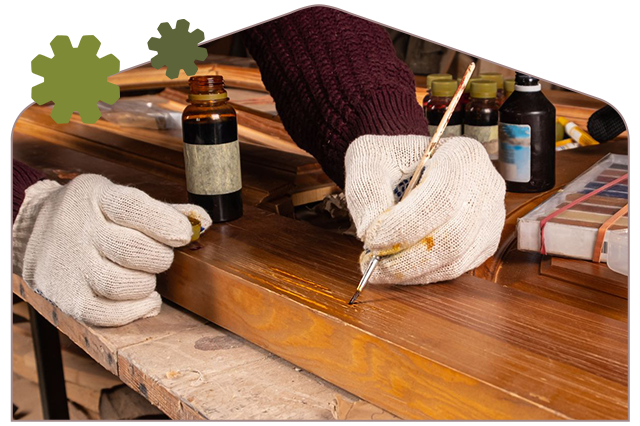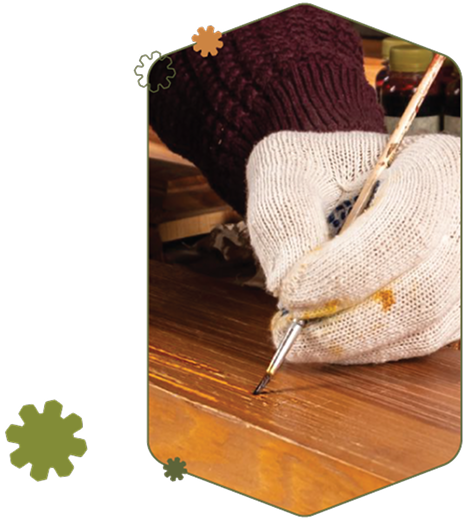As the new Premier League season kicks off on Friday 15th August, fans across the UK are gearing up to support their teams with passion and new kits. But before you splash out on the latest shirt, it’s time to ask:
What’s the environmental impact of football shirts? And could keeping your old one be the greener choice?
The Hidden Environmental Cost of Football Kits
Football is more than a game – it’s a global industry, and one with a growing environmental footprint. Each season, Premier League clubs release new home, away, and third kits, creating pressure on fans to upgrade.
But here’s the problem:
- The UK throws away 300,000 tonnes of clothing every year (WRAP).
- Football shirts, made from polyester, can take up to 200 years to decompose.
- Manufacturing a single shirt produces around 5.5kg of CO₂ emissions (Carbon Trust).
- Most kits are manufactured overseas, increasing carbon emissions through transport.
Multiply that by millions of fans globally, across all the different leagues, and the environmental impact is staggering.
Premier League Season: A Fresh Start But Not for Your Wardrobe
Every year, with the return of the Premier League, shirt sales surge. But what happens to last year’s shirt?
Research conducted by Green Football showed that an estimated 100,000 tonnes of sportswear ends up in UK landfills every year. If this clothing were distributed among a packed crowd at Wembley Stadium with 90,000 people, each person would receive over 2,500 pieces of clothing. Astonishing.
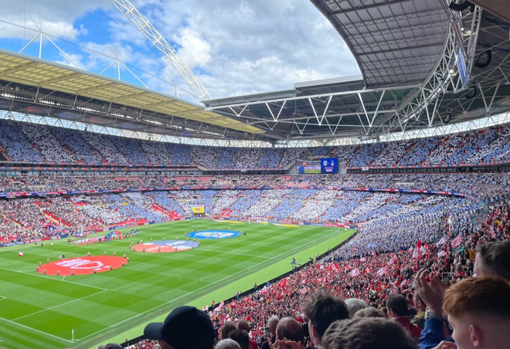
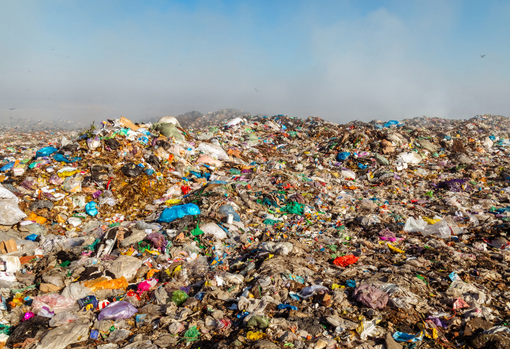
Keeping your kit in play for just nine more months can reduce its carbon, water and waste footprint by up to 30%. That older shirt still has value and saving it from landfill is a powerful act of environmental responsibility.
5 Reasons to Keep Your Old Football Shirt
1.🌍 Reduce Waste & Carbon Emissions
Keeping your kit in use reduces textile waste and prevents microplastics from entering the environment. That stat we mentioned above about how manufacturing a single shirt produces around 5.5kg of CO₂ emissions – the official Premier League Clubs Retail, Merchandise, Apparel & Product Licensing Revenue stats show that in the 2022/23 season, 10,047,000 new shirts were sold for Premier League teams. That’s an astonishing 55,258,500kg of CO₂ emissions, equivalent to taking 8,114 return flights to Australia or driving around the circumference of the world 8,129 times in an average diesel car.
2. 🧵 Repair, Don’t Replace
If your shirt is damaged or worn, wonderful tailors and seamstresses can fix torn seams, re-stitch badges, or patch small holes. Search our directory for a local clothing repair business near you. They can even rework your shirt to suit your style.
3. 💷 Save Money
Premier League shirts now cost £70 – £120, depending on club and type. Repairing and reusing is not only eco-friendly – it’s budget-friendly too.
4. 🕰️ Vintage Never Goes Out of Style
Retro shirts from the ’90s or early 2000s are back in fashion. Old kits show loyalty, history, and character unlike brand-new replicas. Check out shirt resale businesses like Classic Football Shirts and Cult Kits, or find old shirts on local Facebook groups and in charity shops.
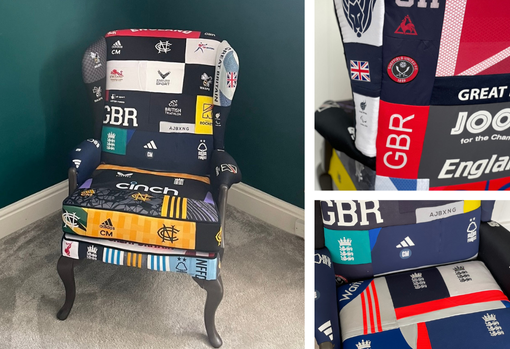
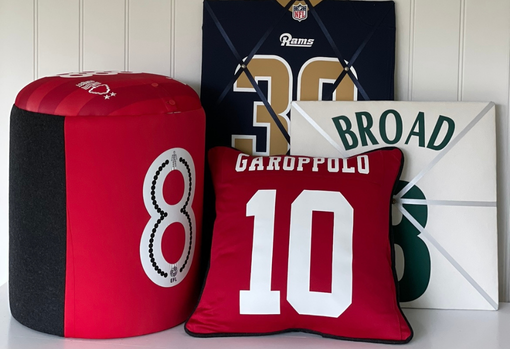
5. 🛠 Get Creative
Don’t want to re-wear your shirt for another year, or you’ve grown out of it? Don’t throw it away – use it to create something cool for your home. A memoboard for your office, a cushion for the sofa, even a footstool or a chair. Get crafty yourself or give your local upholsterer a call to make something unique and save your shirt from landfill.
And if you really don’t want last year’s shirt anymore, then please consider donating it. Green Football’s Great Save Campaign is a fantastic initiative that’s diverting sportswear away from landfill and keeping it in use.
Support Your Team Sustainably
So whether you’re watching from the stands or the sofa, you can make a difference. This football season, choose to wear and repair your existing shirt instead of replacing it unnecessarily.
By supporting your team sustainability and not buying new shirts every year, this tells clubs and brands that fans care about the planet. The more we reuse, the more pressure there is for change.
Some clubs, like Brentford, have already moved to a two-year kit cycle rather than changing their shirts every year.
Let’s encourage others to do the same.
Article suggestions for you
 Your sustainable Christmas starts now. From supporting local businesses and choosing thoughtful gifts to embracing second-hand treasures and eco-friendly wrapping, our tips help you reduce waste, save money and make the holidays truly meaningful.
Your sustainable Christmas starts now. From supporting local businesses and choosing thoughtful gifts to embracing second-hand treasures and eco-friendly wrapping, our tips help you reduce waste, save money and make the holidays truly meaningful. Get inspired for a greener Halloween! Discover how to create sustainable Halloween costumes and plastic-free decorations using what you already have. From clever costume swaps to DIY home décor ideas, make your spooky season fun, affordable, and eco-friendly - without costing the planet. 🎃🌍
Get inspired for a greener Halloween! Discover how to create sustainable Halloween costumes and plastic-free decorations using what you already have. From clever costume swaps to DIY home décor ideas, make your spooky season fun, affordable, and eco-friendly - without costing the planet. 🎃🌍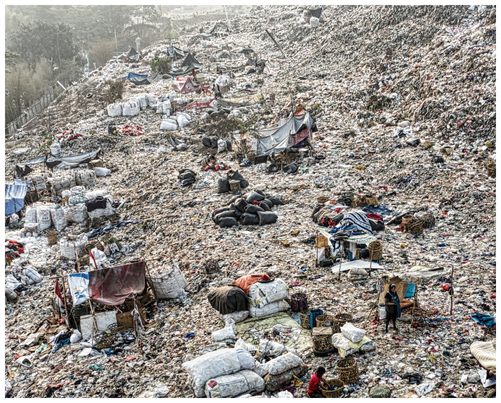 Discover the hidden costs of fast fashion. From £20 t-shirts that pay workers just pennies, to the environmental damage caused by textile waste and pollution, cheap clothing comes at a high price. This Sustainable Fashion Week, learn why repairing and caring for your clothes is a powerful way to fight waste, support fair labour, and build a truly sustainable wardrobe.
Discover the hidden costs of fast fashion. From £20 t-shirts that pay workers just pennies, to the environmental damage caused by textile waste and pollution, cheap clothing comes at a high price. This Sustainable Fashion Week, learn why repairing and caring for your clothes is a powerful way to fight waste, support fair labour, and build a truly sustainable wardrobe.

